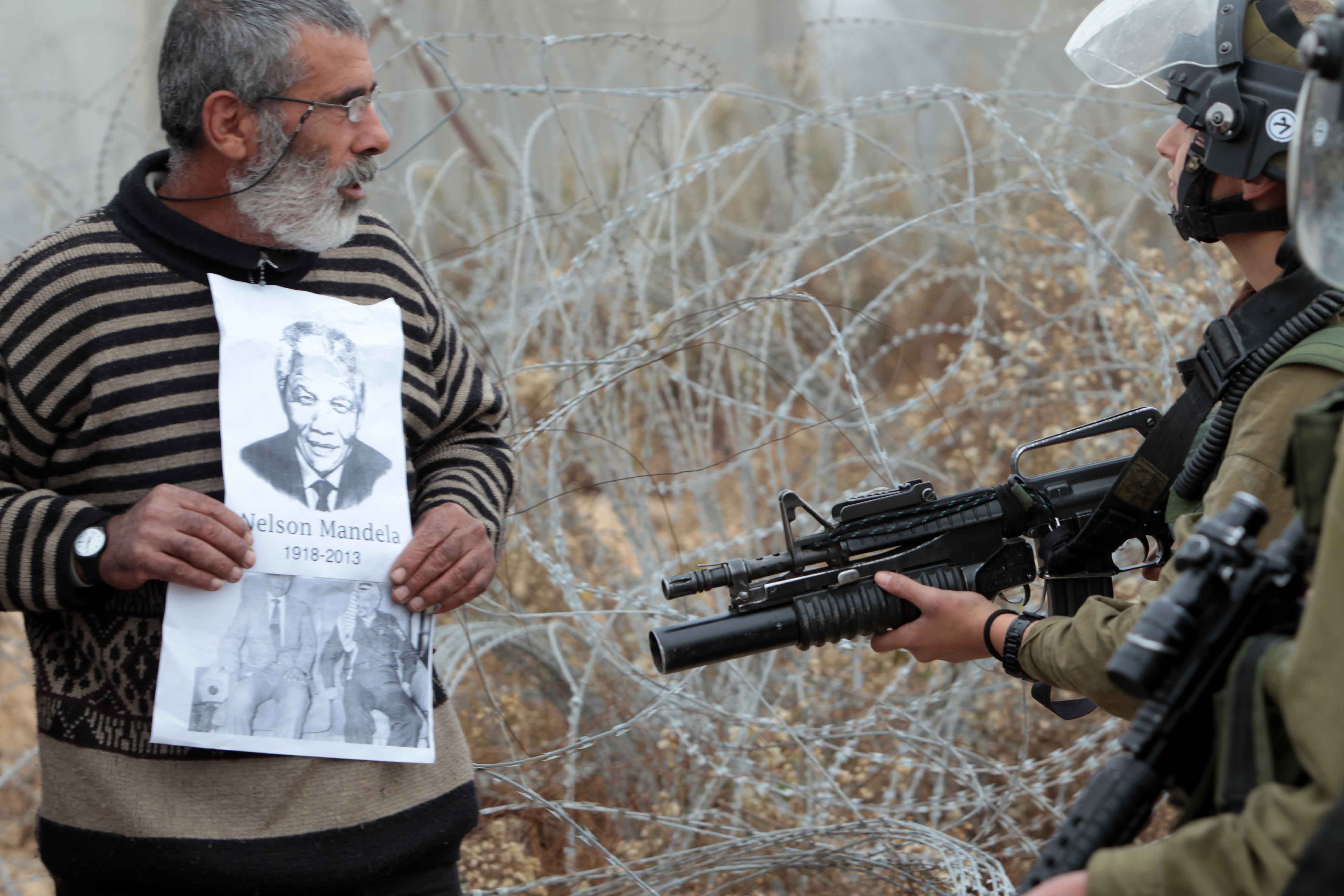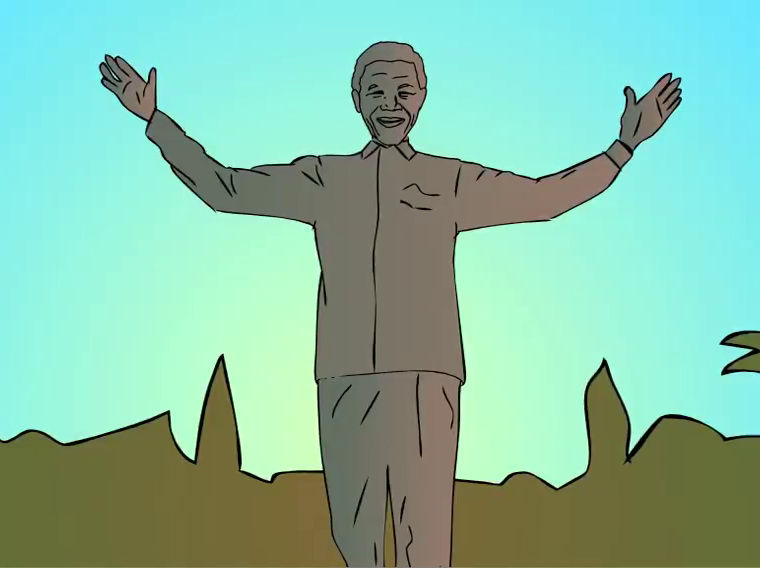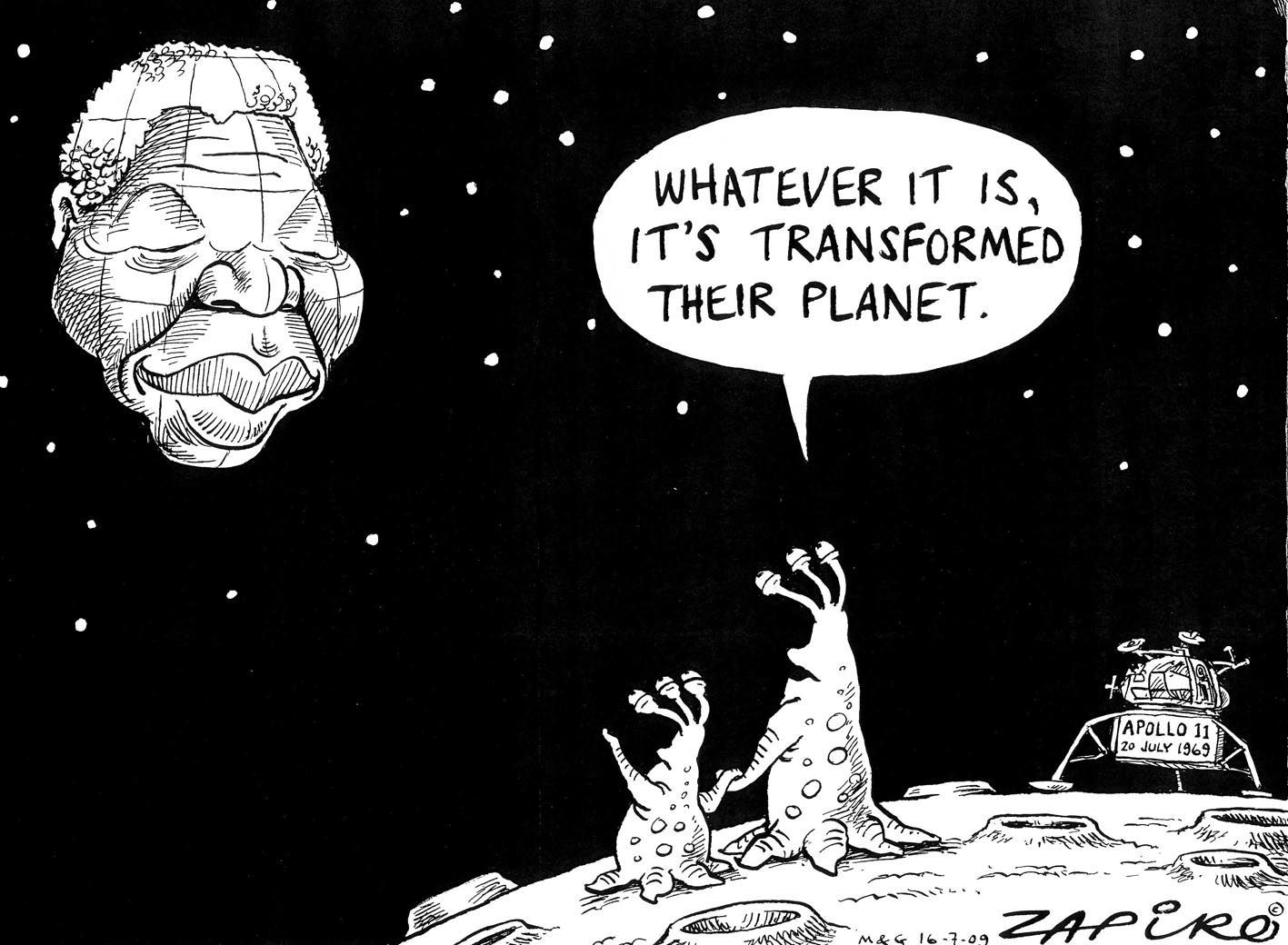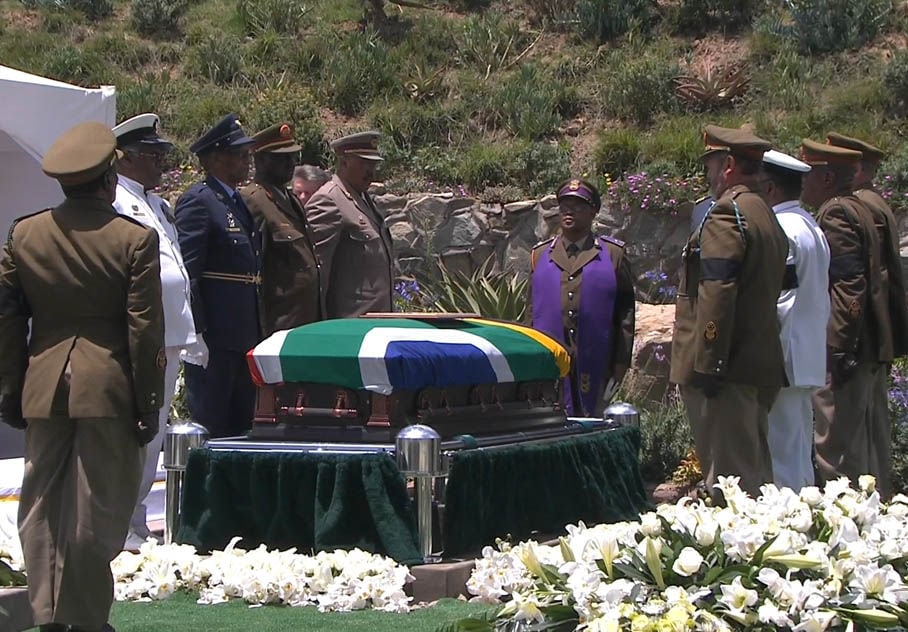
The world pays tribute to Mandela (slideshow)
As South Africans come to terms with the loss of former president Nelson Mandela, the rest of the world bids farewell to Madiba.

Pimples: Saving Madiba's rabbit (video)
Gwede, Mac and Blade try their best to stop the rabbit from whispering in Mandela's ear. But the elusive animal has some tricks up its sleeve.

Zapiro's best Madiba cartoons (slideshow)
From his toughest moments to his most triumphant, Madiba has been an inspiration. Here are some of our favourite Zapiro cartoons about him from 1994 to 2013.

Mandela: SA's greatest son laid to rest (slideshow)
The world watched as Nelson Mandela was finally laid to rest in his hometown of Qunu following a dignified and moving funeral ceremony on Sunday.
A prominent Wits academic has said that he purchased a portfolio of prints by Nelson Mandela, from London's prestigious Belgravia gallery, which the Nelson Mandela Foundation had verified as a forgery.
Newspapers in South Africa and abroad reported this week that art collectors are in a frenzy over substantial investments they have made in art works sold to benefit the Nelson Mandela Foundation. A major concern is that two portfolios of signed prints of Robben Island landscapes and Mandela's handprints may be valueless.
Mandela will approach the high court next week in a bid to stop his former lawyer, Ismail Ayob, and Ayob's business partner, Ross Calder, from continuing to market Mandela's art work.
The academic, who asked not to be named, said he showed his two portfolios to South African master printmaker Mark Attwood, who initially ran test proofs of Mandela's works at the request of Ayob and Calder.
Calder, a former advertising executive, is director of the business Touch of Mandela, a name derived from Mandela's handprints, sold as art works for charity.
Speaking on Thursday from New York, where he is on an art fellowship, Attwood said he began collaborating with Calder some years ago on the promise of producing 5 000 prints.
However, the collaboration had been put on hold when Calder was declared insolvent.
Attwood alleged he was not paid for the 12 prints of art work on unsigned paper he had generated. Later, he said, he had been shown a "beautiful" printed prospectus intended for art collectors, which stated that he would provide a certificate of authenticity of Mandela's works on Calder's behalf.
Attwood was adamant that he did not provide authentication as part of his professional service. He said that when he approached Calder about his payment and the claim in the prospectus, the latter had responded that he could do nothing because his business was insolvent.
A year later, Ayob had approached Attwood with a new request that he generate proofs of the art work for Mandela personally. The request was for six prints, in black and white, 50cm by 65cm, on rough, hand-made paper with the watermark of the prestigious French paper mill, Johannot.
In 2003 Attwood printed 26 sets of the "hand" portfolio -- he told the Mail & Guardian that he clearly recalled their unusual numbering system, given to him by Ayob.
These were intended for Mandela's personal use, as an "artist's edition" to be given as gifts to dignitaries. Mandela was to sign the portfolio.
Attwood then encountered the Wits academic, who showed him a portfolio of the "hand" series that he claimed were "one-eighth of the size, printed on one piece of paper in one long strip, signed by Mandela". Said Attwood: "It was nothing special, nothing unique. It was done in the same process used to print letterheads."
This work was recently submitted to the Nelson Mandela Foundation for authentication, and, according to the academic in question, was deemed a forgery.
Attwood also questioned the authenticity of the Mandela signature on the academic's portfolio. It did not resemble others he had seen, he said.
Some months later Calder resurfaced under the logo of Ross Calder Publishing. Now in partnership with Ayob, he again approached Attwood to produce Mandela prints.
Attwood said that when he drew Calder's attention to the poor-quality edition he had seen earlier, the latter claimed to have destroyed it.
Meanwhile, the M&G has learned that Calder presented a new scheme for the prints in January. In this project, he enlisted more than 40 artists to "collaborate" with Mandela by painting or constructing collages over the former president's signed art works.
According to local painter Beezy Bailey, artists -- including Sam Nhlengethwa and Marlene Dumas -- were provided with a limited number of large-format, signed, "hand" prints. The works were then printed in a catalogue and sold at the World Economic Conference at Davos in January.
Bailey claimed he had not been paid and that his and Mandela's signatures had been erased.
Approached about the question of the portfolio's authenticity, Mandela Foundation CEO John Samuel said: "I'm not an arts expert. It is accurate to say that I have met [the academic in question]." Samuel declined to comment further.
Efforts to contact Calder on Thursday were unsuccessful.

